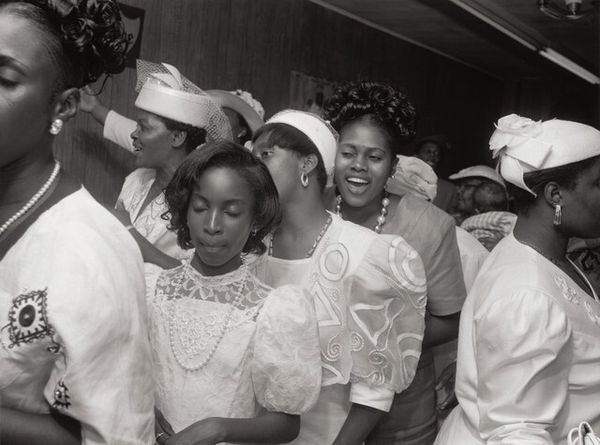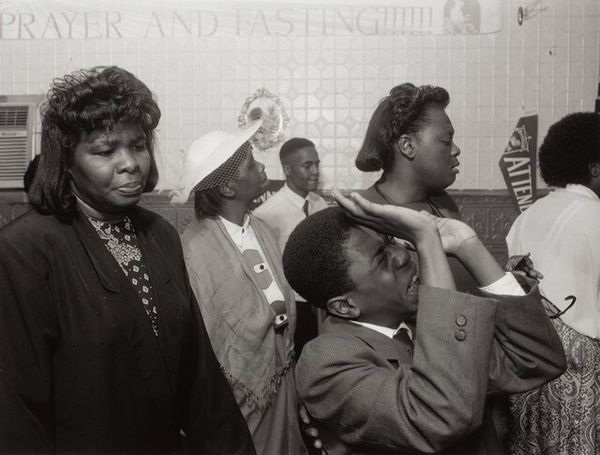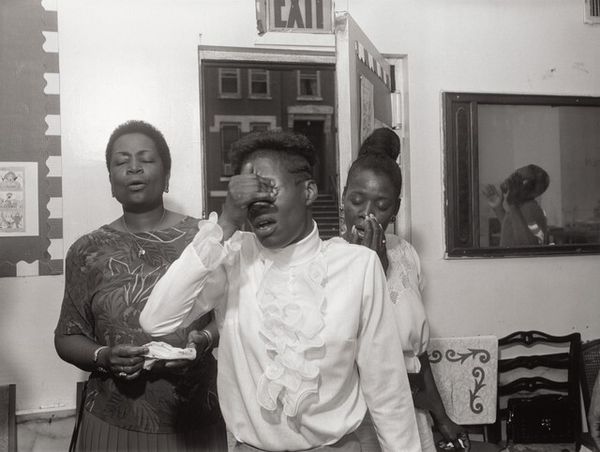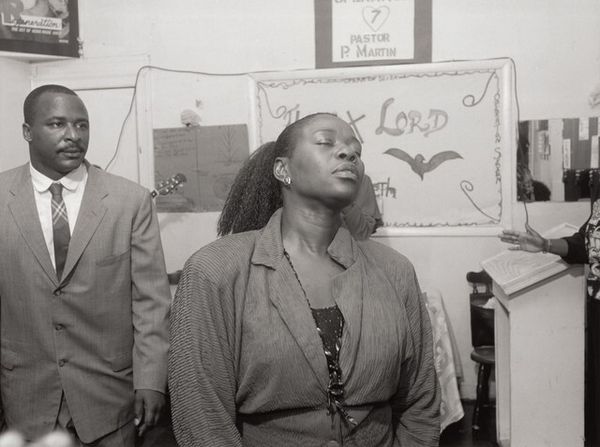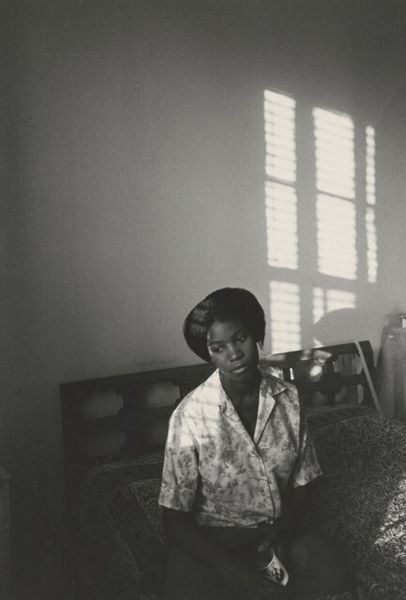
photography, gelatin-silver-print
#
portrait
#
african-art
#
contemporary
#
black and white photography
#
street-photography
#
photography
#
group-portraits
#
gelatin-silver-print
#
monochrome photography
#
monochrome
Dimensions: image: 24.1 × 32.4 cm (9 1/2 × 12 3/4 in.) sheet: 27.94 × 35.56 cm (11 × 14 in.)
Copyright: National Gallery of Art: CC0 1.0
Editor: This "Untitled" black and white photograph by Thomas Roma, from 1992, using the gelatin-silver print process, captures a group of people in what appears to be a moment of communal singing, maybe even worship. The varying expressions are intriguing. What do you see in this piece from a materialist perspective? Curator: I'm drawn to the photographic process itself. Consider the gelatin-silver print – a relatively accessible medium at the time, but one requiring specific labor and knowledge to produce. The choice of black and white eliminates color, forcing us to focus on the tonality and the play of light, things that could easily translate into commercial resources. Editor: Commercial resources? In a photo like this? Curator: Think about it. Photography democratized portraiture. Here we see representations of African American people, a group historically denied such visibility, taking ownership of the means of representation. The photographer’s choice to capture this specific social scene, and how the resulting photograph could circulate as an accessible commodity speaks volumes about materiality and power. Look how the “praying hands” inscription blends into the patterned tile. Where did that material come from? How much did it cost? Who benefitted? Editor: That's a fascinating take. So you are saying the means of creating the photograph and distributing it matters just as much, if not more, than the content of the photo itself? Curator: Precisely. Consider the social and economic forces at play. The type of paper, the development chemicals, the darkroom labor, and finally the market it reaches. Are these materials ethically sourced? Who profits from this image? Editor: I see the image in a whole new light now. I hadn't considered the materials used and their context, but you've given me so much to think about. Thank you! Curator: Indeed. It reminds us to always consider the entire production chain when we look at art. The materials themselves hold a history.
Comments
No comments
Be the first to comment and join the conversation on the ultimate creative platform.


